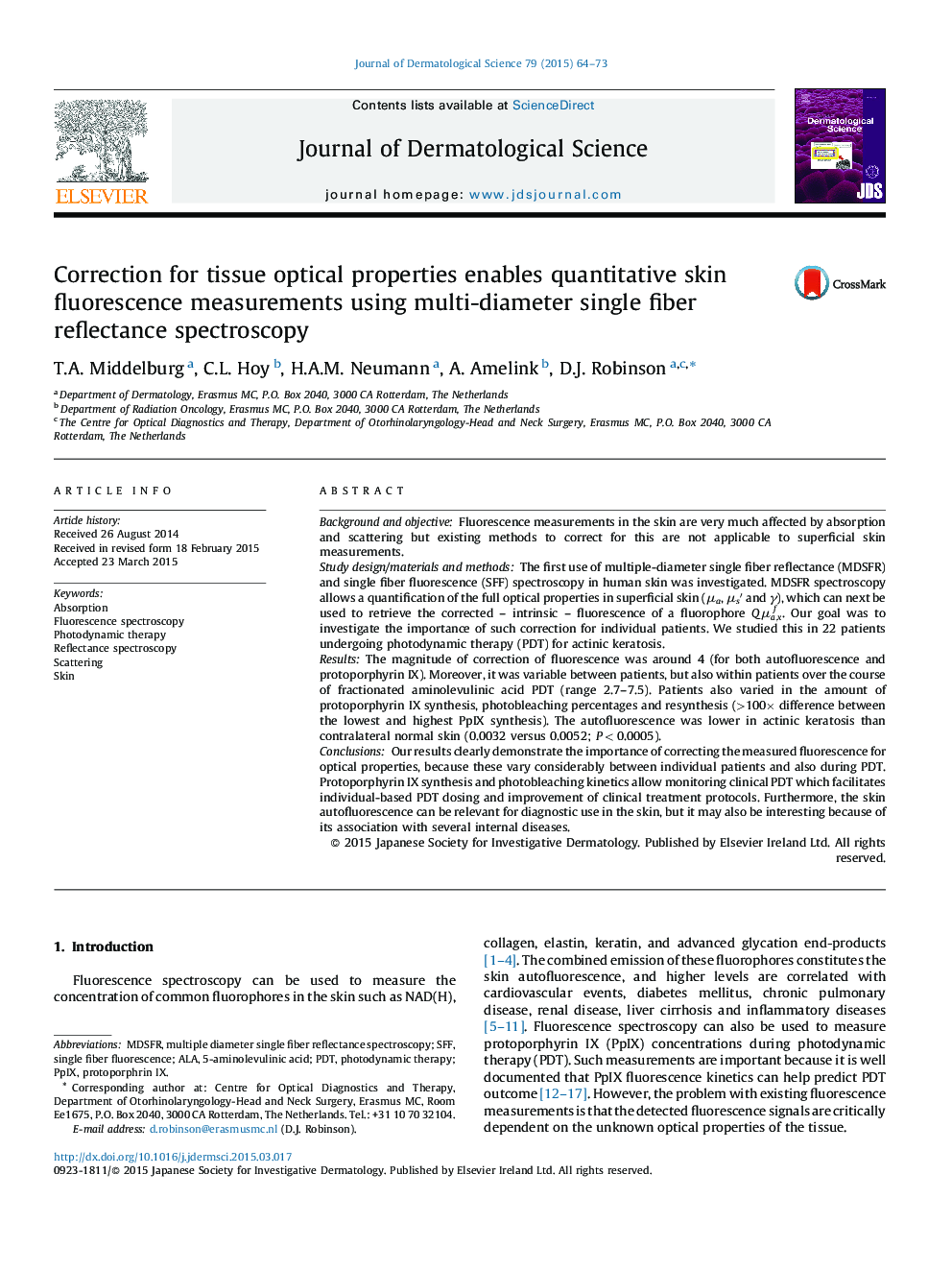| کد مقاله | کد نشریه | سال انتشار | مقاله انگلیسی | نسخه تمام متن |
|---|---|---|---|---|
| 3212584 | 1203186 | 2015 | 10 صفحه PDF | دانلود رایگان |
• Quantification of optical properties in the skin is challenging and so far has been unsuccessful.
• Multi-diameter single fiber reflectance spectroscopy allows for such quantification.
• Correction for these optical properties also enables quantitative fluorescence measurements.
• We find that optical properties are variable between patients and during photodynamic therapy.
• Quantification of protoporphyrin IX fluorescence allows personalization of photodynamic therapy.
Background and objectiveFluorescence measurements in the skin are very much affected by absorption and scattering but existing methods to correct for this are not applicable to superficial skin measurements.Study design/materials and methodsThe first use of multiple-diameter single fiber reflectance (MDSFR) and single fiber fluorescence (SFF) spectroscopy in human skin was investigated. MDSFR spectroscopy allows a quantification of the full optical properties in superficial skin (μa, μs′ and γ ), which can next be used to retrieve the corrected – intrinsic – fluorescence of a fluorophore Qμa,xf. Our goal was to investigate the importance of such correction for individual patients. We studied this in 22 patients undergoing photodynamic therapy (PDT) for actinic keratosis.ResultsThe magnitude of correction of fluorescence was around 4 (for both autofluorescence and protoporphyrin IX). Moreover, it was variable between patients, but also within patients over the course of fractionated aminolevulinic acid PDT (range 2.7–7.5). Patients also varied in the amount of protoporphyrin IX synthesis, photobleaching percentages and resynthesis (>100× difference between the lowest and highest PpIX synthesis). The autofluorescence was lower in actinic keratosis than contralateral normal skin (0.0032 versus 0.0052; P < 0.0005).ConclusionsOur results clearly demonstrate the importance of correcting the measured fluorescence for optical properties, because these vary considerably between individual patients and also during PDT. Protoporphyrin IX synthesis and photobleaching kinetics allow monitoring clinical PDT which facilitates individual-based PDT dosing and improvement of clinical treatment protocols. Furthermore, the skin autofluorescence can be relevant for diagnostic use in the skin, but it may also be interesting because of its association with several internal diseases.
Journal: Journal of Dermatological Science - Volume 79, Issue 1, July 2015, Pages 64–73
